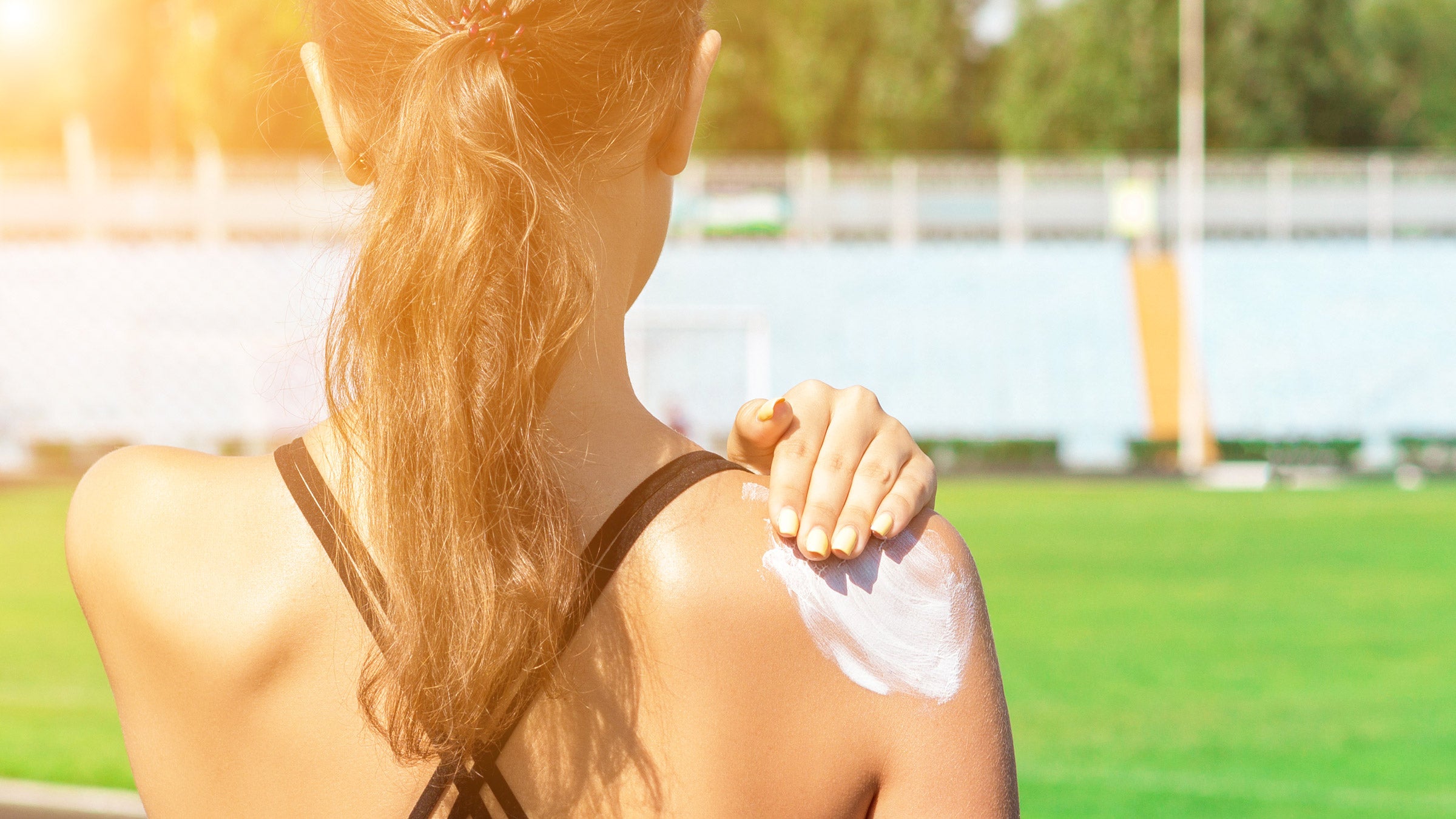This 5-Minute Routine Will Save Your Skin

(Photo: Getty Images)
Dr. Brandith Irwin can tell almost immediately if a new patient is an endurance athlete.
“Most endurance athletes, as they age, have cardiovascular systems 10-15 years younger, but skin that’s 10-15 years older,” said Irwin, a board-certified dermatologist and founder of skincare guide SkinTour. Indeed, study after study has shown that endurance athletes have a greater preponderance of skin cancer and sun damage when compared to others in their age and sex cohorts who are not active.
“Triathletes are just outdoors more, let’s face it. Even if you train part of the time in an indoor pool, most training for triathlons is outdoors,” said Irwin. “As a result, damage to skin happens–the two big ones are skin cancers and premature aging.”
Because of this increased risk, a yearly visit to a dermatologist for a skin cancer screening is a must. According to the Skin Cancer Foundation, 99 percent of all skin cancer cases are curable if diagnosed and treated early. But this diligence should also apply to preventing such damage from happening in the first place. Training exclusively indoors to avoid the sun is one option, but not always a feasible one–and it’s probably overkill, said Irwin.
“Damage to skin is largely preventable with just five minutes of time before your training sessions or races,” explained Irwin. “A simple daily skincare routine really does make a big difference over time.”
Your Five-Minute Routine
30 seconds: Choose the right sunscreen
The stuff you use for day-to-day sunscreen? It won’t cut it for a swim, bike, or run workout. “You need a sweat-resistant and water-resistant sunscreen that lasts at least 80 minutes. This should contain 10 to 20 percent zinc,” said Irwin. “Zinc is the sunscreen ingredient that blocks UVA and UVB most effectively.”
Don’t worry too much about SPF numbers–as long as it’s over 30, it’s a solid pick. “SPF doesn’t matter as much as the zinc percentage.”
2 minutes:
The common direction for sunscreen is to “apply liberally”–and most people misinterpret what that means. A better guide is to cover a layer you can see over the areas that will be exposed to the sun, then massage this layer into the skin. Remember the areas that are often forgotten, like the small of your back (which is often exposed when a tri top rides up in aero position), neck, and ears. If you have thinning hair, apply sunscreen to your scalp as well. In total, you should use at least one ounce of sunscreen (the equivalent of a shot glass full of lotion for the body, plus a nickel-sized dollop for the face).
1 minute:
Let the sunscreen dry before putting on clothes. Rushing to get dressed while the sunscreen is still wet can cause the product to smear on your clothes instead of protecting your skin.
30 seconds:
Put your workout clothes on–ideally, items containing Ultraviolet Protective Factor, or UPF. This textile equivalent of SPF adds a layer of protection against the sun. Though the idea of wearing more clothing may sound stifling, Irwin said many UPF items on the market today are extremely breathable, even in environments with high heat and humidity.
30 seconds:
Before heading outside, apply a sunscreen lip balm containing zinc to the lips: “Many skin cancers occur on and around the lips,” said Irwin.
30 seconds:
If your workout will be longer than an hour, stash extra sunscreen in your bike bag or jersey pocket to reapply on the go. Irwin recommended powder sunscreens for these touch-ups, as they are small, lightweight, and easy to use on the fly. It may seem like a nuisance to stop mid-workout to reapply sunscreen, but one minute of prevention could save your skin from a lifetime of damage.
If you forgot to reapply during your ride, or if you notice your skin turning pink when you get home from your long run, Irwin said to take an anti-inflammatory like aspirin or ibuprofen to minimize pain and inflammation. It’s also recommended to jump into a cool shower to stop the skin from becoming irritated and drink plenty of water keep skin well-hydrated.